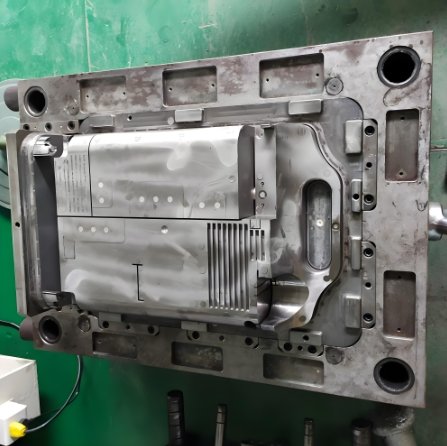
Micro-molding is essential in electronic injection molding. It enables the production of tiny, precise parts used in advanced electronics. Mold makers use this technique to create components with extreme accuracy. This process ensures that small electronic devices function properly. It also helps reduce material waste and improves efficiency.
1. What is Micro-Molding?
Micro-molding is a specialized type of electronic injection molding. It produces extremely small parts with precise details. These parts are often smaller than a few millimeters. Mold makers use special molds and advanced equipment to achieve high precision.
1.1 Key Features of Micro-Molding
- Produces ultra-small parts.
- Maintains tight tolerances.
- Uses high-precision molds.
- Requires specialized machines.
2. Why Micro-Molding is Important in Electronics
Electronic devices are getting smaller. Smartphones, medical devices, and wearables need tiny components. Micro-molding helps create these parts with high accuracy. Mold makers play a key role in ensuring quality.
2.1 Benefits of Micro-Molding in Electronics
- Miniaturization: Helps reduce the size of electronic components.
- Precision: Ensures accurate part dimensions.
- Material Efficiency: Uses less plastic, reducing waste.
- Mass Production: Produces large quantities of small parts efficiently.
3. Applications of Micro-Molding in Electronics
Micro-molding is used in various electronic applications. It helps create critical components for high-tech devices.
3.1 Micro-Connectors
Micro-connectors are vital for smartphones, tablets, and computers. Electronic injection molding ensures they are durable and reliable. Mold makers design them to withstand repeated use.
3.2 Micro-Sensors
Many modern devices rely on micro-sensors. These sensors detect motion, temperature, and pressure. Micro-molding allows manufacturers to produce tiny, efficient sensors.
3.3 Micro-Switches
Micro-switches are used in medical and industrial electronics. They need precise molding to function correctly. Mold makers create them with advanced micro-molding techniques.
3.4 Micro-Housings
Small electronic parts need protective housings. Micro-molding produces strong, lightweight enclosures. These housings protect components from damage.
4. Challenges in Micro-Molding
4.1 Mold Design Complexity
Designing tiny molds is difficult. Mold makers must ensure extreme precision. Even small errors can cause defects.
4.2 Material Selection
Not all plastics work for micro-molding. The material must flow easily into small cavities. It should also have strong mechanical properties.
4.3 High-Precision Equipment
Standard injection molding machines cannot handle micro-molding. Special machines are needed to maintain accuracy. These machines require expert operators.
4.4 Quality Control
Micro-molded parts are difficult to inspect. They are too small for standard measuring tools. Mold makers use high-resolution microscopes and advanced imaging technology.
5. Role of Mold Makers in Micro-Molding
5.1 Designing Micro-Molds
Mold makers design molds with extreme precision. They use advanced software to create detailed models. Every detail matters in electronic injection molding.
5.2 Selecting the Right Material
Choosing the right material is crucial. Mold makers select plastics that meet the needs of micro-electronics. They consider strength, flexibility, and temperature resistance.
5.3 Ensuring Quality Control
Mold makers conduct rigorous testing. They use advanced measuring tools to check part accuracy. High-quality micro-molding prevents defects in electronic devices.
6. Advances in Micro-Molding Technology
6.1 Nano-Molding
Nano-molding is an advanced form of micro-molding. It creates even smaller parts with higher precision. This technology is shaping the future of electronic injection molding.
6.2 AI and Automation in Micro-Molding
AI and automation are improving micro-molding. Smart systems monitor the molding process. They adjust settings in real time to maintain quality.
6.3 Improved Materials
New materials are being developed for micro-molding. These materials improve durability and reduce defects. Mold makers are using them to create better electronic components.
7. Future of Micro-Molding in Electronics
7.1 Growth in Wearable Technology
The demand for wearable electronics is increasing. Micro-molding will play a key role in producing tiny components for smartwatches, fitness trackers, and medical wearables.
7.2 Expansion in Medical Electronics
Medical devices require precision-molded parts. Micro-molding ensures the production of safe and effective components. Mold makers are helping advance medical technology.
7.3 More Sustainable Manufacturing
Manufacturers are focusing on sustainability. Micro-molding reduces material waste and improves efficiency. The future of electronic injection molding is greener and more cost-effective.
Micro-molding is transforming electronic injection molding. It allows for the creation of ultra-small, precise components. Mold makers play a critical role in ensuring quality and efficiency. As technology advances, micro-molding will become even more essential in electronics manufacturing.
